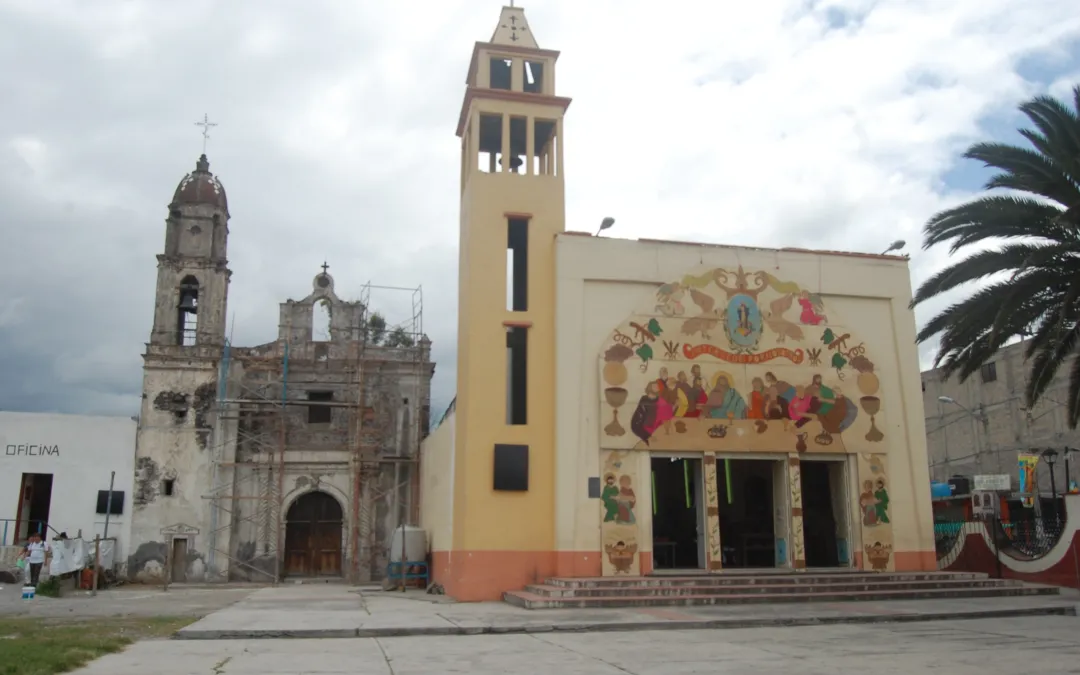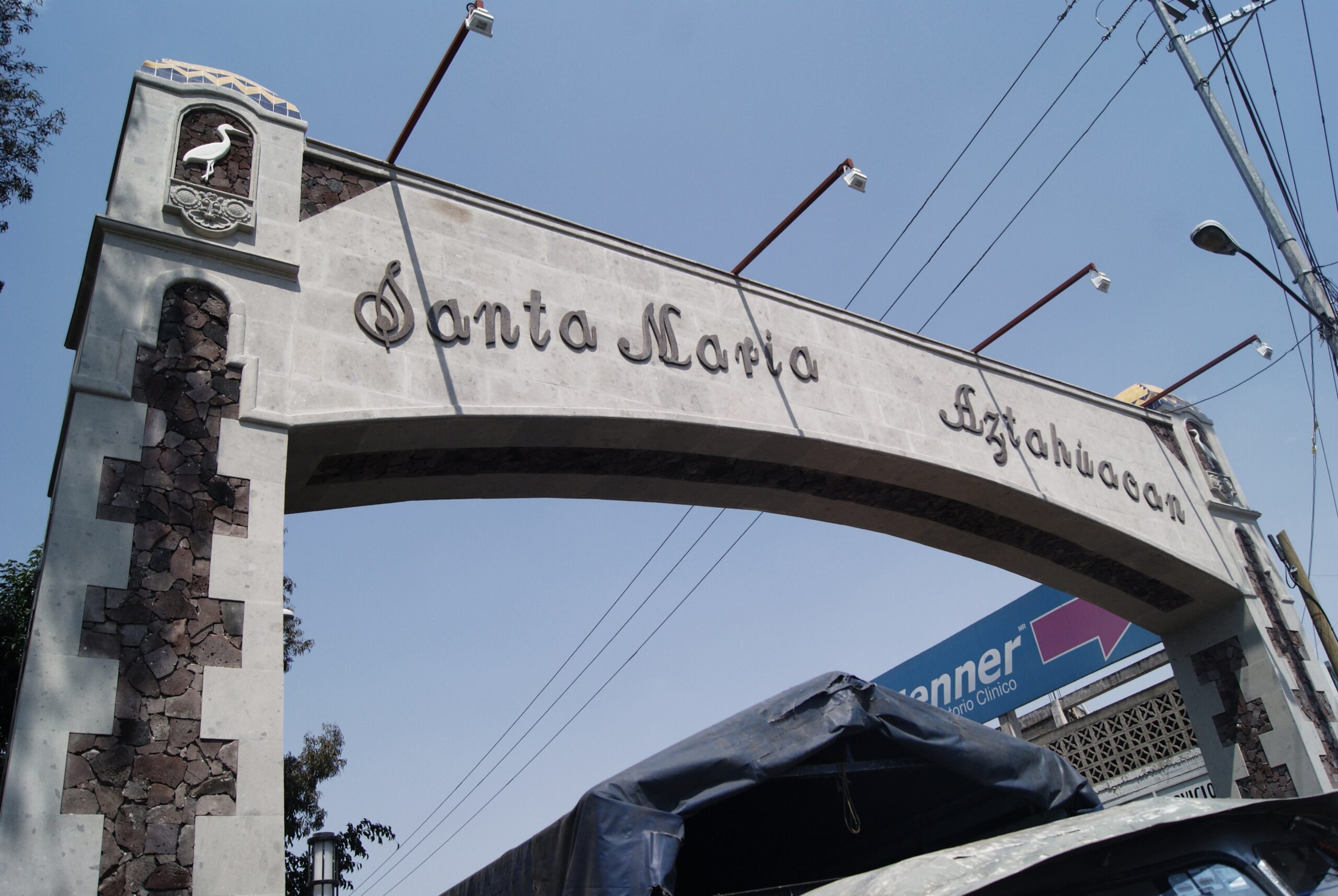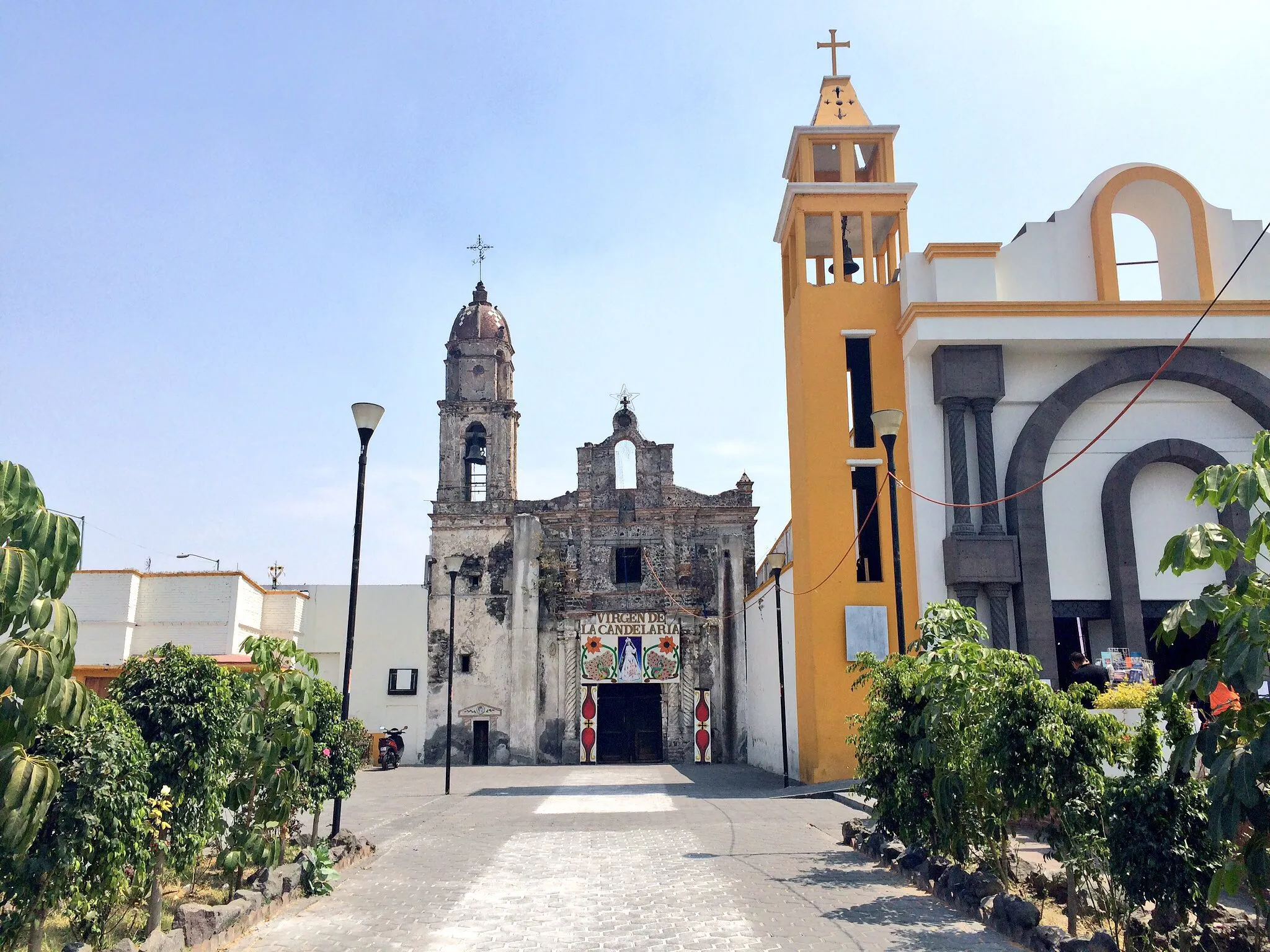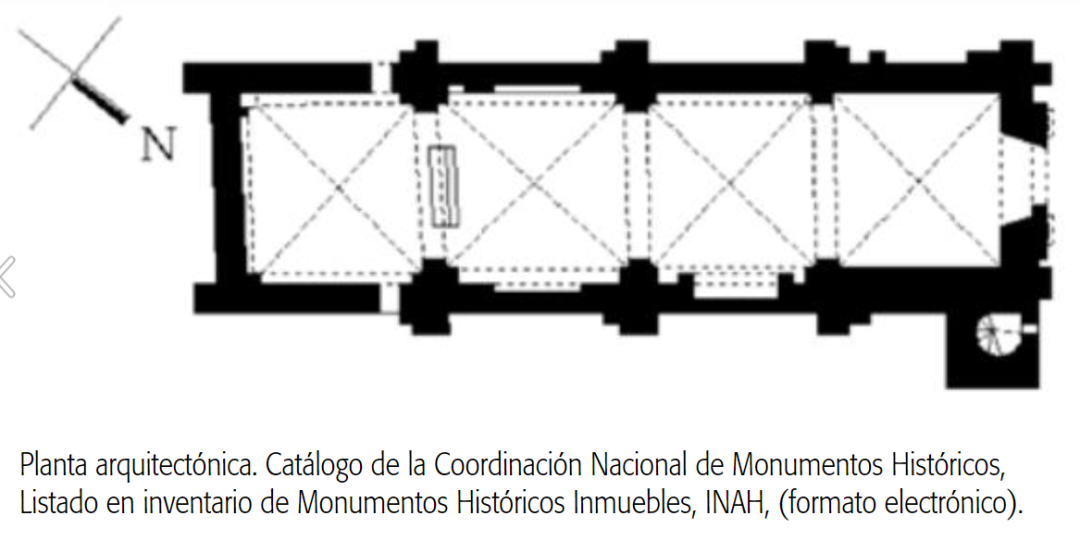Written by Gibran
July 22, 2023

Introduction
In the center of Santa María Aztahuacan is the temple where the town’s Christianity congregates. Dedicated to St Mary, it is the center of the town’s religious traditions that make up its historical and intangible heritage.
Santa María Aztahuacán is one of the native towns of Mexico City. What does this mean? It means thati t have existed since even before the urban settlement in which it is located was called “Mexico City”.
Why am I interested in telling you about this place? Well, it’s where I came to live after I got married and left my parents’ house. A magical and colorful place that I will tell you about in several posts.

Historical data
The oldest building was built by the Franciscan order in the 16th century. On one side is the two-story priest’s house and on the other end, the current temple, from the 18th century. Both temples are surrounded by an atrial wall that, according to the testimony of the locals, was built in approximately 1973 by the Department of Public Works, possibly having destroyed the original wall.*
In 1968 an adjoining chapel that was cracked was demolished and in that same year the tower was consolidated.
The ship of the old temple has a fracture in the vault of the second body that threatens its integrity, even though there are concrete reinforcements on the sides, which is why it is only used on the main festival and “dia de muertos”. On the right side, a new temple (the largest in the photo) was built in 1973.
Inside there is a plaque with the following legend (Translated from spanish):
SECRETARY OF STATE AND OF THE OFFICE OF FINANCE AND PUBLIC CREDIT SECTION 7A TABLE 2A IN THE CASE THAT ON LAST NOVEMBER 23 YOU RAISED. REQUESTING TO THIS MINISTRY THAT THE LAND CALLED “CALZADILLA” LOCATED IN THE TOWN OF SANTA MARIA HAZTAHUACAN IN THE DISTRICT OF XOCHIMILCO BE DECLARED NOT AWARDABLE, THE PRESIDENT OF THE REPUBLIC HAS AGREED TO SAY TO YOU. THAT FOR BEING VERIFIED IN THIS [DEPENDENCY]. THAT THE LAND IN QUESTION BELONGS TO THE EGITES OF THE SAME PEOPLE, IS EXCEPTED FROM CONFISCATION IN ACCORDANCE WITH THE FINAL PART OF ART. 89 OF THE LAW OF JUNE 25, 1856. INDEPENDENCE AND FREEDOM, MEXICO, DECEMBER 6, 1968= ROMERO= C.C BENITO SERRANO AND JUAN CONSTANTINO PRESENT


Interventions :
- 2010.- An intervention plan was promulgated to recover the original vault of the building in the second body of the main ship by means of crack injection. Concrete frames were also placed on the façade. In addition, reinforced concrete beams were placed on the side walls, a reinforced concrete foundation was enabled parallel to the one that already existed. Finally, the area where the halls and the rectory are located were enabled to build a group of toilets. The works were suspended in 2011.
- 1981.-.Atrial Band: an iron grate is placed in the openings of the inverted arches of the atrial wall.
- 1969.-Conservation and structuring work on the temple, verifying the verticality of the side walls and preparing a project for the restructuring and consolidation of cracks in walls and vaults, replacement of flattening and protection and waterproofing of roofs.
- 1968.- Demolition of the chapel attached to the factory, much later than the original one from the 18th century. A wall affected by demolition was rebuilt. Reconsolidation and foundation of the body of the tower.
*SOURCE: Patrimonio arqueológico, histórico, intangible y natural de la delegación Iztapalapa, Beatriz Ramírez González: coordinadora general, UAM, Delegación Iztapalapa. p. 71-74.

Conclusion :
Even from the name, Santa María Aztahuacán is historical and attractive. In Latin America, where the gospel came from the Roman Catholic Church, the temples became the center of towns, being in many cases vaults of historical witnesses for posterity. The temple of Santa María is no exception and it is a good point to start touring this town in the present, past and, if God helps, the future.
Peace and good!



